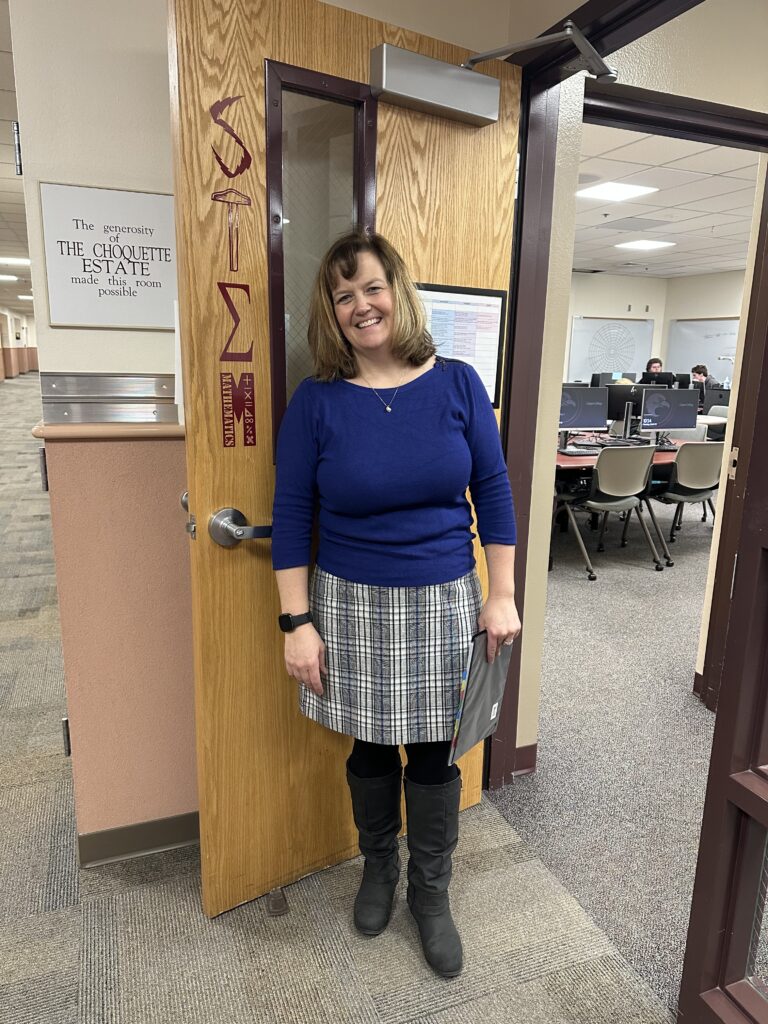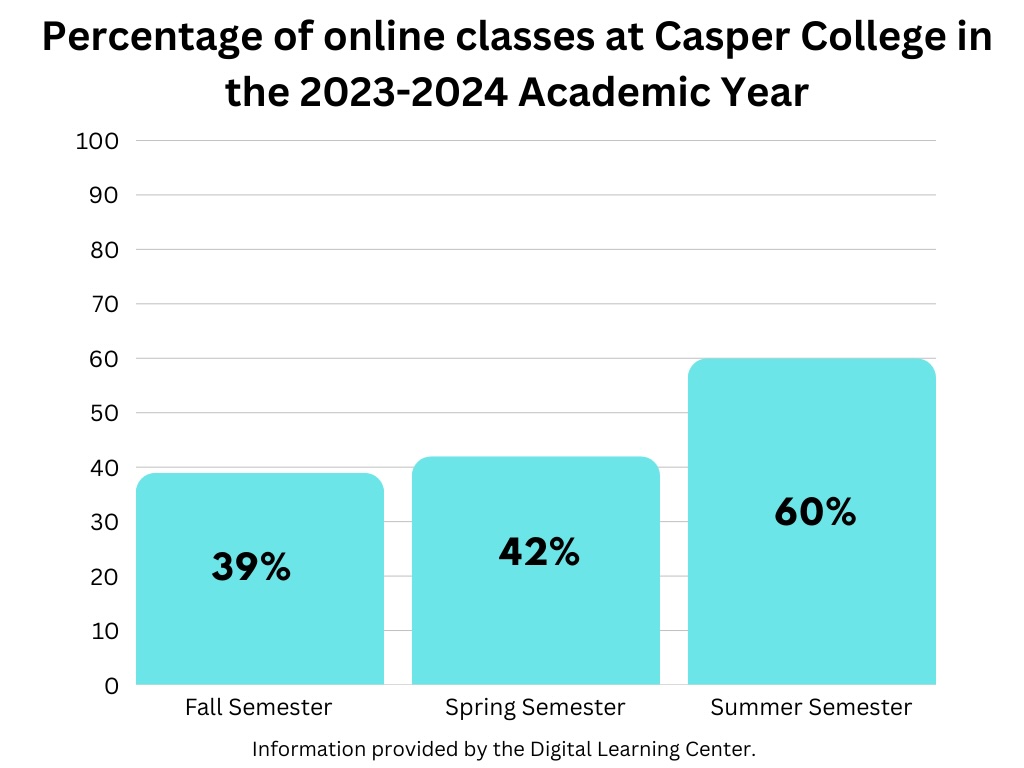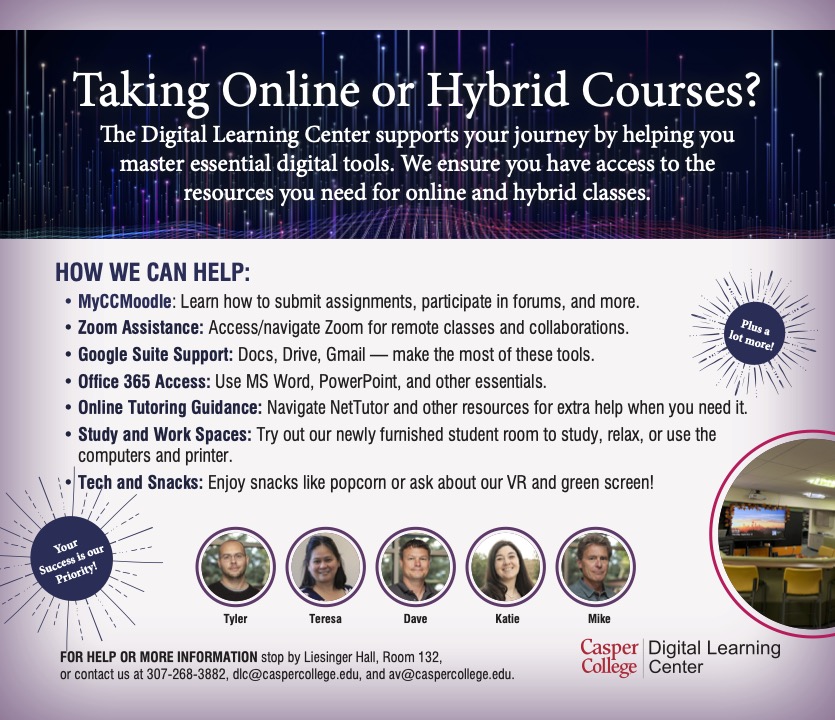Natalie Benson
Chinook Writer

Teresa Stricklin, math instructor and STEM Center director at Casper College, posed for a photo with the Chinook.
At Casper College, faculty are learning how isolation and the feeling of human connection impacts online learning. While seen most clearly during the rise of online learning during COVID-19, these effects can still be seen in online classrooms today.
“Online, I feel like sometimes I’m talking to the abyss, and I’m not real sure if my explanations are connecting or not connecting,” said Teresa Stricklin, a math instructor and the director of the Casper College STEM Center.
She said she knows some online students well because they engage with her and advocate for themselves.
But with other students Stricklin admitted, “I’m like, you’re just a name on a page and I know nothing about you.”
Stricklin said it is much harder to tell when online students are struggling since she isn’t doing the work directly with them in the classroom. She also explained how the workload for online classes is much higher for faculty because teachers have to anticipate where students will struggle in lessons instead of being able to read the room or field questions from students in person. If a student doesn’t reach out, she doesn’t know if they need help until the test scores come in, which can be several weeks after content is taught. This can lead to students feeling isolated and falling behind but still needing that help to understand the content and continue learning well.
COVID-19 truly changed the landscape of online learning.
“Prior to COVID, we had quite a few [faculty] that were just like, I just want to do my face-to-face stuff. I don’t need any digital stuff. When COVID hit and they all had to transition into it… most of those faculty stayed digitally, so like their gradebook. Even if they were just doing complete face-to-face, they still utilize the system,” said David Siemens, director of the Digital Learning Center.
While all classes are required to use these online services, like Moodle, for content and grading, the amount of online work differs. Fully online classes utilize these services greatly, with every aspect of the work online and no regular face-to-face contact. Hybrid classes are similar in that the majority of the work is online; however, there is still a required face-to-face portion of the class at a certain time, which changes from class to class. In-person or fully face-to-face classes utilize Moodle for grading and assignment instructions and completion, but all of the content learning happens in a face-to-face classroom with other students and teachers on a set schedule.
The number of online classes is only growing. According to the DLC, in the 2023-2024 Academic Year, 39% of classes in the fall semester were online, 60% were online during the summer semester, and 42% were online during the spring semester. Those numbers don’t include the hybrid or face-to-face classes that utilize the online services that the DLC provides.

When it comes to the issue of human connection, Stricklin shared her advice to students taking online classes.
Stricklin said, “Make yourself known in a positive way. Connect with the faculty member. Even in week one, if that faculty member has virtual hours, do it. Connect with that person. …don’t just be a name on a roster all semester long. If there’s discussion forums, participate. Participate in them.”
If human connection is the hardest part of online classes, then purposefully reaching out is one of the best ways to avoid feeling isolated in those classes.
Stricklin also had one more piece of advice.
She said, “The most important thing is if you’re online, you gotta read, triple read, quadruple read the instructions. Because it’s the only way we can communicate sometimes. …and then advocate for yourself, right? Make the faculty member earn their paycheck. That’s why we’re here.”

